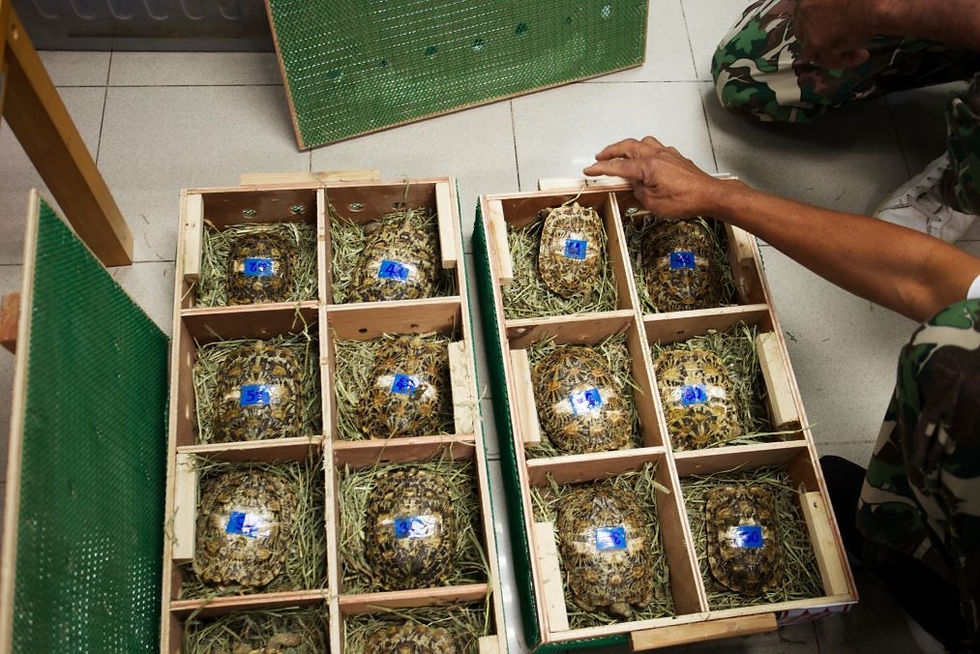An Overview of Animal Laws in Kenya
- Brenda Karimi
- Oct 20, 2024
- 4 min read
Updated: Mar 12
Kenya is home to diverse wildlife and domestic animals. While laws exist to protect them, gaps in enforcement and legislation leave many vulnerable.

At the heart of this framework is the Constitution of Kenya, 2010, which lays a strong foundation for the protection and welfare of animals through several provisions, even though it does not explicitly mention animal rights. Here’s a breakdown:
Chapter 5, Part 2: Environment and Natural Resources: This section emphasizes the need for the state to protect the environment, which includes genetic resources and biological diversity. By ensuring the conservation of natural habitats, it indirectly supports the protection of wildlife, as their survival depends on it.
The Fourth Schedule: Clarifies the division of responsibilities between the national and county governments:
The National Government is tasked with protecting wild animals in conservation areas, which includes national parks, game reserves, and marine parks.
County Governments are responsible for the welfare of domestic animals, ensuring local management and care for livestock, pets, and other domesticated animals.
Article 2(5) of the Constitution of Kenya 2010 states that treaties signed by Kenya are part of Kenyan law. This includes the following important international agreements:
Convention on Biological Diversity
Ramsar Convention on Wetlands of International Importance
Convention on the Conservation of Migratory Species of Wild Animals
Convention on International Trade in Endangered Species of Wild Fauna and Flora (CITES)
World Organization for Animal Health (OIE) Provisions
These constitutional provisions form the legal basis for the enactment of more specific legislation such as;
Prevention of Cruelty to Animals Act (Cap 360): Prohibits acts of cruelty and requires the humane treatment of all animals. It sets clear standards for the care of animals, including the provision of adequate food and shelter and the prevention of unnecessary suffering. Violating these standards can lead to substantial penalties.
Prevention of Cruelty to Animals (Transport of Animals) Regulations: The Transport of Animals Regulations, 1984, complements the Prevention of Cruelty to Animals Act by establishing guidelines for the humane transport of animals across land, sea, and air. This includes the conditions in which animals are loaded, the space they are given, and the care they receive during long journeys.
Key highlights of humane animal transport include ensuring the safe loading and unloading of animals, protecting them during transit by shielding them from harsh conditions and requiring owners to supply food and water throughout the journey. Additionally, transporting unfit animals necessitates prior veterinary approval to ensure their well-being.
Wildlife Conservation and Management Act (2013): Addresses everything from combating poaching to protecting endangered species; ensuring wild animals get the legal protection they deserve. It plays a vital role in preserving Kenya’s rich biodiversity, helping to ensure future generations can enjoy these creatures in their natural environment.
Fisheries Management and Development Act (2016): This Act is dedicated to ensuring that fish and other marine life get their fair share of protection. It promotes sustainable fishing practices and helps maintain the balance between local fisheries and the health of marine ecosystems.
Penal Code (Cap 63): Protects animals by criminalizing sexual acts with them and classifying them as property, making theft punishable by up to fourteen years. It also imposes similar penalties for killing animals to steal their skin and prescribes three to fourteen years for willful injury or killing. Additionally, spreading infectious diseases to animals is a felony with a maximum penalty of seven years. Overall, the Penal Code enforces important protections against animal cruelty and exploitation.
Veterinary Surgeons and Veterinary Para-professionals Act, 2011: Sets rules for the training, registration, and licensing of veterinary professionals. It makes sure that animal health services meet certain standards and covers a wide range of animals, including livestock, pets, and wild animals in captivity. The Act highlights the importance of veterinary care in diagnosing, treating, and preventing diseases, while also promoting the welfare of animals through proper oversight.
The Meat Control Act: The Meat Control Act sets minimum standards for slaughterhouses to ensure the welfare of live animals before slaughter, supported by regulations that cover hygiene, animal handling, and meat transportation for food safety.
Environmental Management and Coordination Act, 1999: This legislation is Kenya’s main guide for managing the environment. It sets up systems to ensure sustainable management of land, water, plants, and animals. The Act aims to protect ecosystems by maintaining the balance between plants, animals, and their habitats while also tackling pollution that can affect public health.
The Animal Diseases Act: Addresses the control of diseases in various animals, including livestock and pets. Enforced by the Animal Diseases Rules, 1968, this Act regulates animal movement and outlines necessary actions when animals are suspected of carrying infectious diseases, helping to prevent the spread of illnesses that could affect both animal populations and public health.
Branding of Stock Act: Regulates the registration and branding of livestock, including horses, cattle, camels, sheep, and goats, by specifying where brands should be imprinted, primarily on the hind leg and neck. However, the Act faces criticism for not addressing animal welfare during the branding process, as it lacks guidelines to minimize pain.
Kenya has made progress in recognizing animals in its laws, but much more remains to be done. Too many animals continue to suffer. Farmed animals endure harsh conditions with little oversight, stray animals are often treated with cruelty due to a lack of humane management strategies, and laboratory animals and exotic pets, remain invisible in the law.
Stronger laws, better enforcement, and greater awareness are essential to building a society that values and protects all living beings. Animals are not objects; they think, feel, and suffer. Safeguarding their welfare is not only a moral obligation but also crucial for preserving biodiversity and maintaining ecosystem balance.



Comments